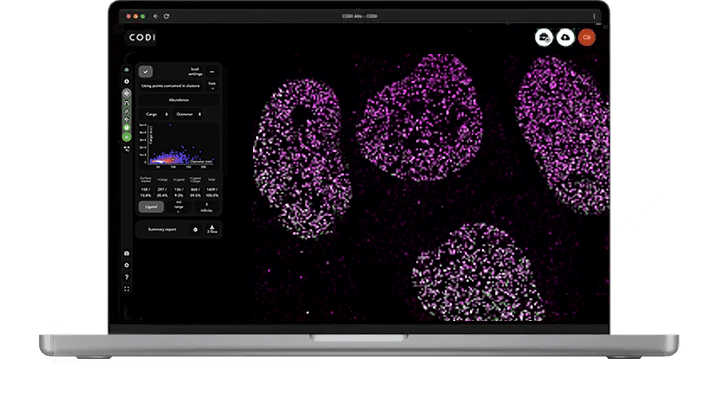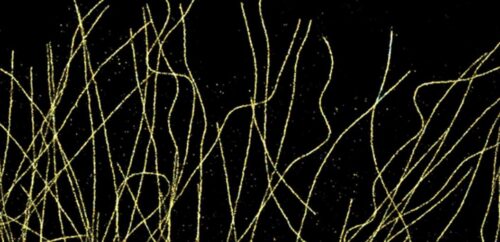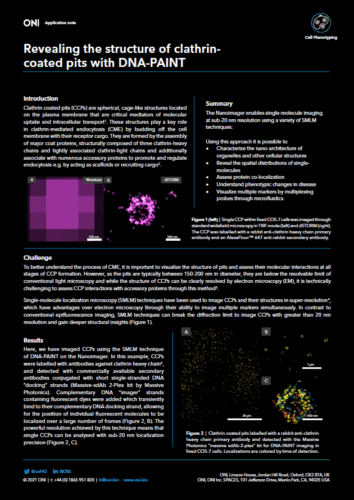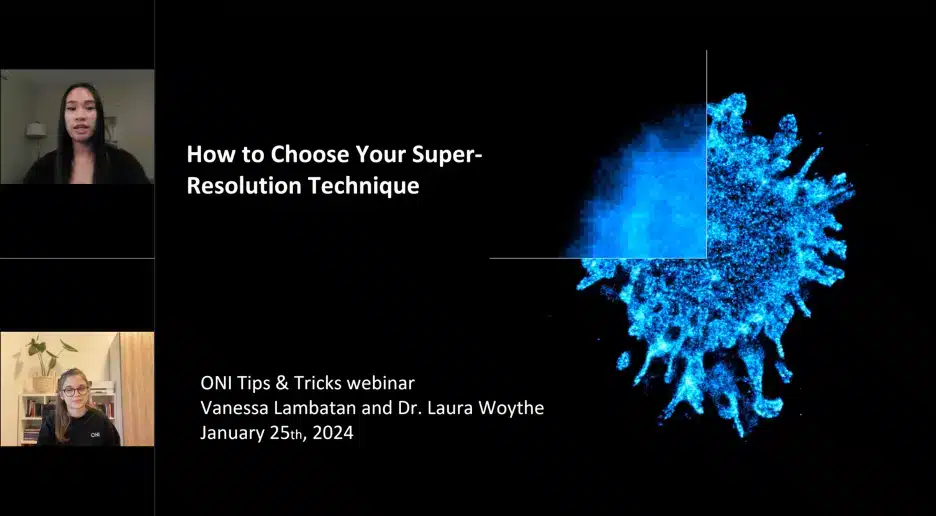PAINT (Point Accumulation for Imaging in Nanoscale Topography) is a super-resolution microscopy technique that enables the visualization of protein structures smaller than 200 nm by utilizing transient binding events involving DNA strands. By using short, single-stranded DNA (ssDNA) oligonucleotides, known as DNA-PAINT, a docking strand attaches to target molecules like antibodies, while a complementary imager strand linked to a fluorophore captures rapid binding and unbinding events, creating “blinks.”
When illuminated by a laser, these events are recorded over time, allowing single-molecule localization microscopy (SMLM) algorithms to reconstruct super-resolution images with a spatial resolution of about 10-30 nm. This makes PAINT particularly effective for studying subcellular structures and dynamics beyond the diffraction limit of light.
















